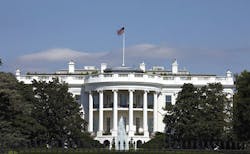From a regional perspective, drought relief bills addressing western drought are pending that would, if enacted, provide for at least another $0.5 billion in spending for water recycling and desalination projects, as well as limited R&D grants to support water technology.
As was the case during the Great Depression, lawmakers recognize the inherent benefit of using infrastructure policy to increase economic activity across the nation and create new jobs. As a result, any infrastructure policymaking will inevitably touch on regulatory mandates (such as Buy American) and compliance issues that in turn will impact any and all forms of assistance whether a grant, loan, loan guarantee, or private activity bonds that allow for tax exempt status. Additionally, when one reviews the implementation of U.S. EPA’s WIFIA program (and perhaps subsequent use by the U.S. Army Corps of Engineers) it is clear that the current Buy American (BA)/American Iron and Steel (AIS) policy is here to stay. The U.S. EPA indicates that it intends to implement the SRF BA/AIS rules in future WIFIA assistance.
As the Water and Wastewater Equipment Manufacturers Association (WWEMA) and other associations provide a critical industry voice to any infrastructure initiatives, it will be WWEMA’s top priority to ensure that any legislation that may be developed in the coming years provides a clear statement that limited federal infrastructure assistance resources must be utilized in the most efficient and effective manner possible. This must be the basis for how assistance is allocated to ensure that: 1) the implementation of the most innovative technologies that can reduce costs and energy and improve public health are maximized; and 2) that if BA/AIS is mandated, any policy must provide that compliance does not result in increased costs to the public, which in turn will most certainly result in the reduction of scarce resources required to address the increasing U.S. infrastructure investment gap.
About the Author: Andy Fraher is director of marketing and business development, North America, for Xylem Inc. and is the chair of the Water and Wastewater Equipment Manufacturers Association’s Buy American Subcommittee. For more information on WWEMA go to www.wwema.org.



